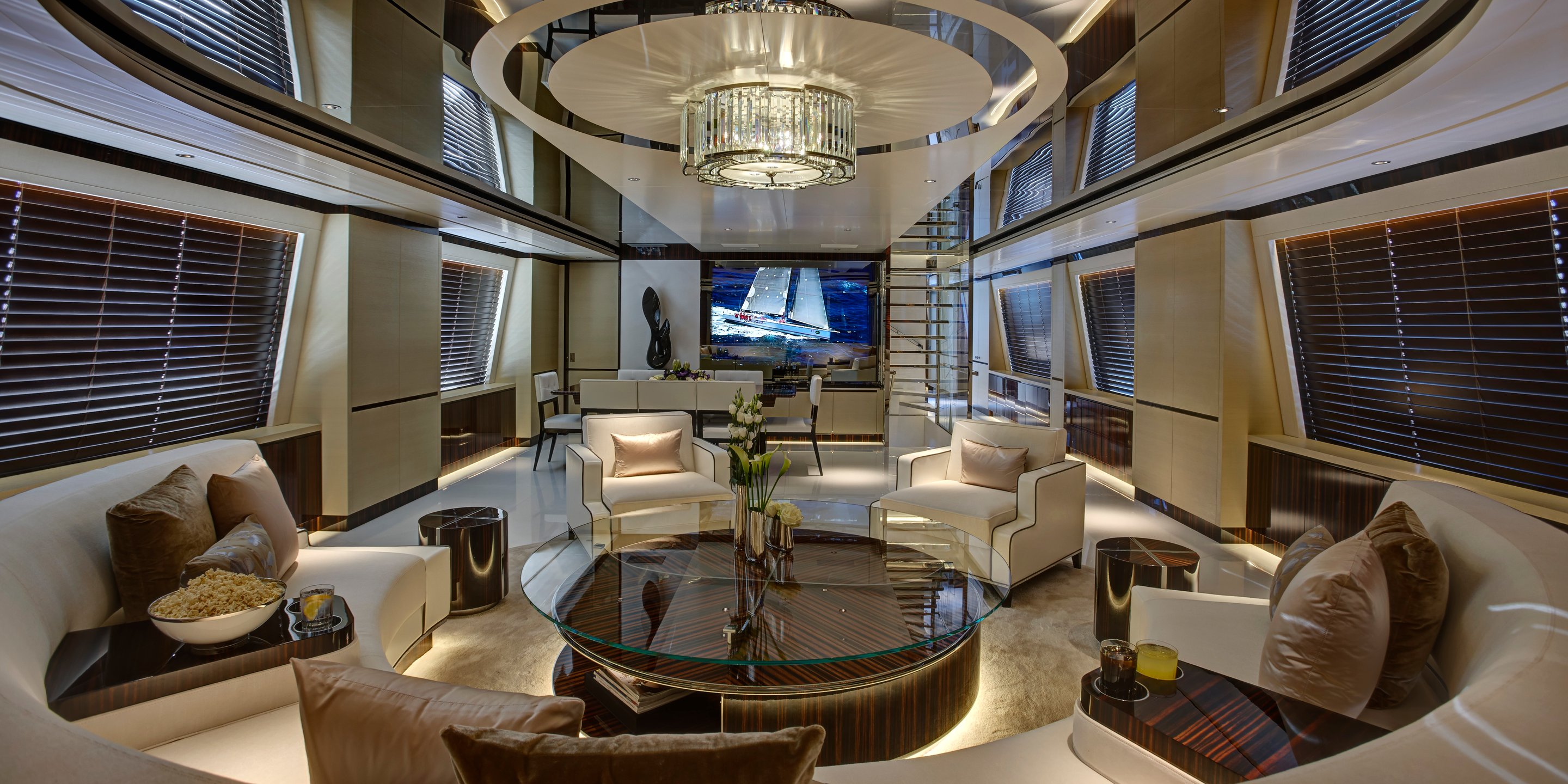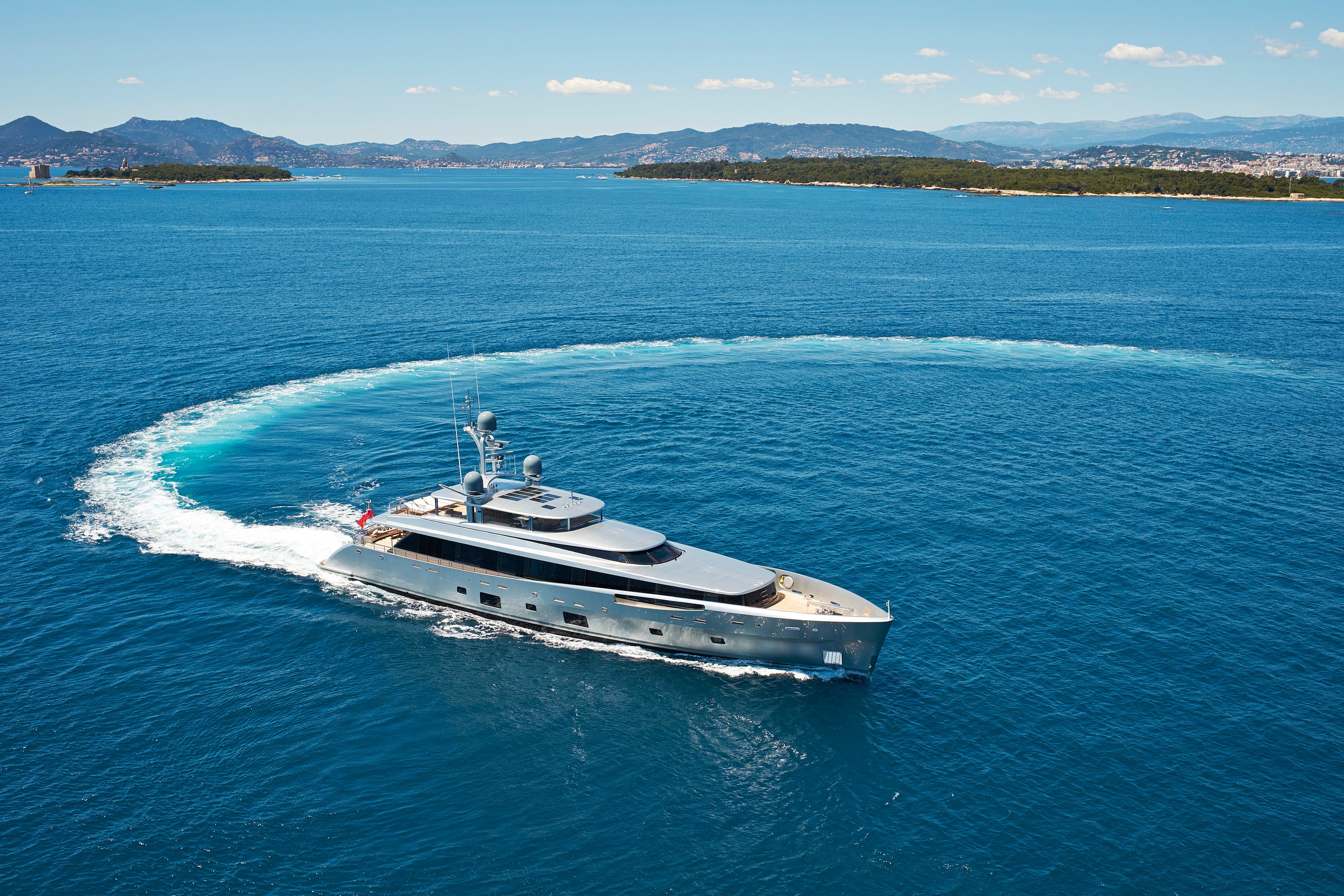Como: Light Years Ahead

This article has previously been published in the 18th edition of PILOT.
Look up ‘life well lived’ in the dictionary and it might well be accompanied by a photograph of Neville Crichton hoisting a yacht racing trophy high in the air or perhaps receiving congratulations for being honoured as a Companion of the New Zealand Order of Merit in the Queen’s Birthday Honours List for 2012.
Neville Crichton is a proud Kiwi, although much of his life and business success is based in Australia where he is Executive Chairman of Ateco Group, the largest independent importer and distributor of vehicles in Australia and New Zealand. Crichton left school at age fifteen to sell cars and ended up racing them in New Zealand, Australia and Europe for a number of teams, including BMW, Ford and Volvo. For two years running he won the New Zealand Touring Car Championship and he even spent a season with the European Touring Car Championship.
Racing man
Crichton’s career as a yacht owner, with a few anomalous cruising departures, centres on racing as well. His first boat was a used P-Class dingy he bought for four pounds and taught himself to race. In just a few years, Crichton was sailing at the national level in borrowed boats or as crew in the hottest fleets. In the 1980s he built a string of offshore racing yachts called Shockwave, and in the 2000s came the switch to super- or mini-maxis all named Alfa Romeo, racing under the burgee of the Royal New Zealand Yacht Squadron. An extremely fierce and successful competitor and winner of most of sailing’s marquee events, Crichton was named New Zealand’s Sailor of the Year in 2003. The same year as he was named to the Queen’s Birthday Honours List, he received a legacy award at the World Superyacht Awards in Istanbul.
It is fitting that the announcement of his Legacy award was made by British Naval Architect Ed Dubois as Dubois has designed an astounding eight yachts for him, including the 46.20-metre Como. It is the first Feadship for Dubois and for Crichton.
“People ask me why a racing sailor would build a motoryacht? The answer was mostly as a mothership to my racing yachts and now as a venue to relax and to enjoy high-octane events such as the Monaco Grand Prix,” Crichton told PILOT. “I took delivery of my first motoryacht, a 41-metre Dubois design also named Como, from Alloy Yachts in 2007, a company I helped found in the 1980s and then sold. At first, the motoryachts, as with my 100-foot-plus sailing superyachts before that, were motherships to accompany the racing yachts, but since 2012 I’ve been out of the yacht-racing scene and my focus has shifted to yachts as a platform for entertaining.
“For example, we had an absolute ball at this year’s Monaco Grand Prix where we could look at part of the track with all the comforts of the boat. The combination of the position and the fact that we could see a jumbo trackside monitor as well as the TV screens on Como meant from a spectating point of view it was like being in a prime grandstand. At the same time we could entertain fifty people on the flybridge comfortably. The boat is the centre of attention and allows me to entertain many friends. It would be nowhere near as pleasant or social to be in a hotel room, even the best suite, so this is, without doubt, the best way to attend the Monaco Grand Prix.”
Time for a new boat
“When I began thinking about a new boat, my original idea was just a larger version of Como, not for more cabins but for larger entertainment areas and to allow placing the galley on the main deck for better service. Moving the galley also allows for an extra crew cabin below. But it was the height of the global financial crisis and even though Australia came through that pretty well, I just wasn’t excited. Then Ed Dubois and Malcolm McKeon went back to the drawing board and came up with something that really worked for my lifestyle. It was a design that would be lighter and brighter inside as well and achieve nineteen knots without going to bigger engines.
“At about the same time, Henk de Vries approached me about building a new boat. I had the design package and frankly it appealed to my long-time desire to own a Feadship. There wasn’t a single boat that led me to Feadship, rather it is the pedigree and quality for which Feadship is renowned, which of course is a key component of the excellent resale value of Feadships.
“I had looked at several Feadships on the brokerage market. The one I was most interested in was Rasselas: even though she is 62 metres and larger than I planned, Rasselas is an outstanding boat.
“Instead, the new Como is sleek and serves the raised pilothouse lifestyle I like but with the advantages of a climate-controlled third deck when necessary. The raised pilothouse form – the Dutch call it two and a half decks – hasn’t been a typical Feadship product for many years.” [In fact, the 30-metre La Masquarade in 1997 and 50-metre Sussurro in 1998 were the last of this type built at Feadship.]
A different approach
Another unusual aspect of the Como project was the fact that Crichton and his team brought the full spec – including tank test data – with them as he had originally intended to build the boat in New Zealand. While Feadship prepared the builder’s drawings, as it always does, De Voogt did not have its usual naval architecture role.
“I recall that in the beginning they were cautious, because it was the first time Feadship was working without drawings from De Voogt and they had to build a relationship with my team,” Crichton continues. “As the process progressed, this relationship developed very well, in particular through Malcolm working as a conduit for the communications. Redman Whiteley Dixon had a long relationship with Feadship and they were very comfortable working with me to complete the interior.
“I am a very hands-on owner during the build process, which was fairly easy to accomplish working in Australia and building in New Zealand. Building in the Netherlands definitely limited my visits, but whenever I was in Europe on business, I squeezed in a visit to the yard. Feadship were excellent; they are very professional and I thoroughly enjoyed my time with them.”
Whirlwind
Malcolm McKeon recalls that the yard meetings were something of a whirlwind because Crichton is very decisive by nature: “He can see things in 3D and he’s very quick. Our meetings at the yard always took half as much time as Feadship planned.”
Meanwhile, Crichton is already enjoying his time onboard Como. “I’ve only been onboard a few weeks but I find the yacht very liveable. The weather has been cooler than average so we have used the flybridge with the glass up and heating on. It’s been warm and very pleasant and the design means that we have enjoyed the effect of being outside but inside at the same time. We are looking forward to rolling the glass down and finally getting into summer – when it arrives.
“I’ve only done two passages so far, but Como has proven very quiet and economical. At 15 knots she’s burning 300 litres an hour and to run at 16 knots 380, which is both very comfortable and economical. Mark Smith, my captain, had an extremely good delivery down to the Mediterranean averaging over 16 knots under some difficult conditions, including coming through the Straits of Gibraltar with 40 knots on the nose without any problems.
“I have owned many boats in my life and the quality that I have received on my present Feadship is light years ahead of my previous boats.”





